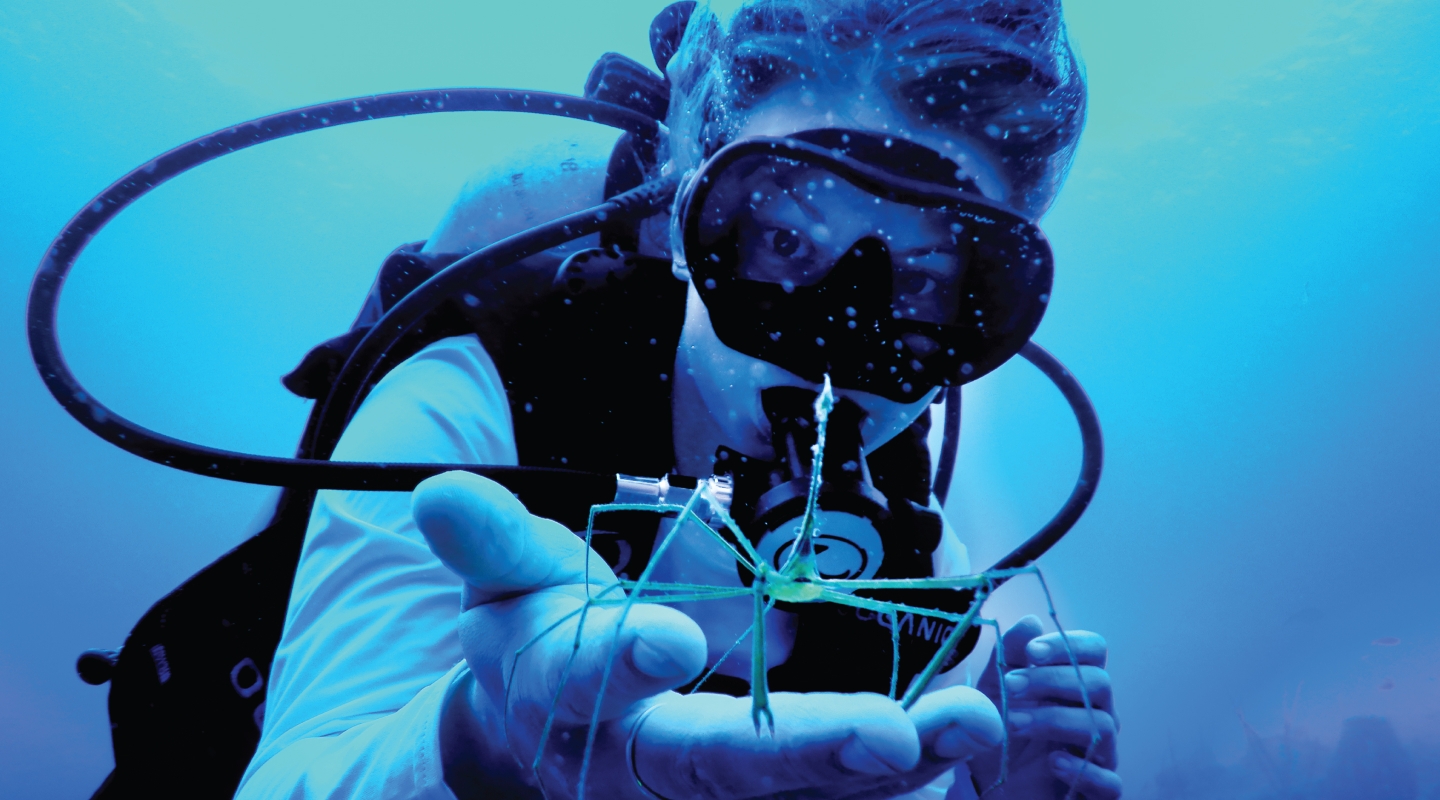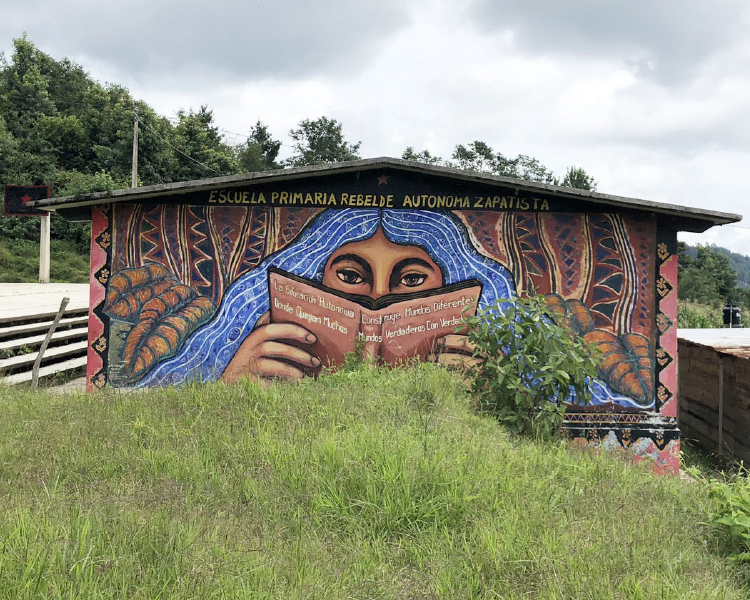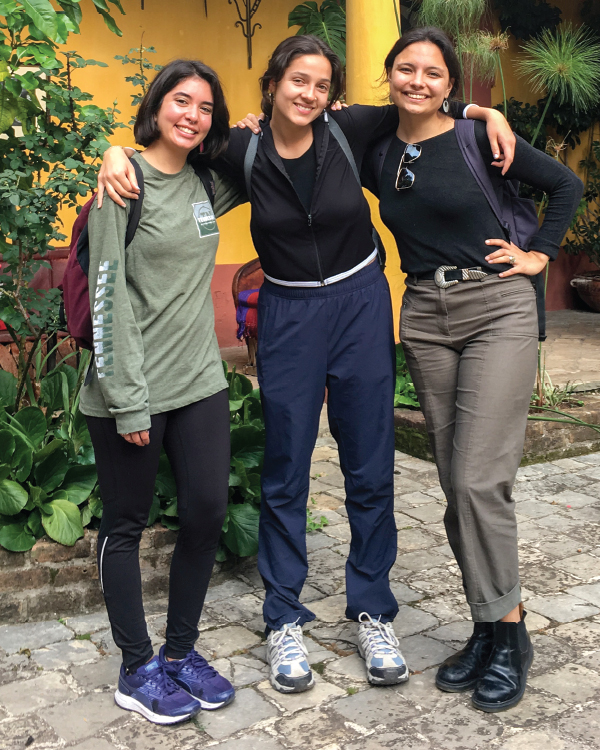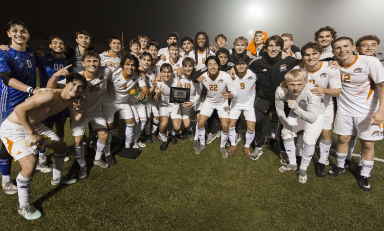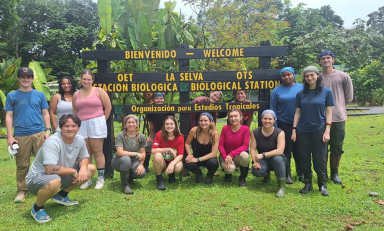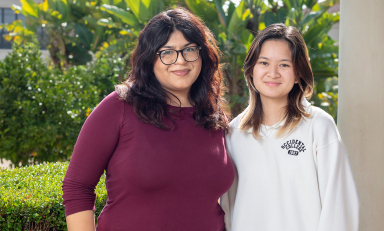Oxy’s Richter Research Program takes faculty and students on an international field trip
As she stood in the humidity of the Mexican jungle, facing the mural of the woman with the blue hair, Natalia Guerra ’20 knew she had seen her before somewhere. It suddenly clicked: A professor back at Oxy had shown a photo of that very mural, painted on a wall of the indigenous school she was visiting, in a classroom lesson on the Zapatista movement. “To understand it anew in that depth and proximity was so special,” says Guerra, a critical theory and social justice major from Rancho Palos Verdes who traveled to Mexico as a participant in Oxy’s Richter Research Program. “I felt more intellectual curiosity during this three-week span than I probably have in my whole Oxy career.”
For 50 years, Oxy’s Richter Research Program has been funding immersive student research across the globe. For its golden anniversary, the International Programs Office and its faculty advisory committee decided to innovate by pairing Oxy Richter students with faculty members abroad. “Our goal was to create an opportunity that is mutually beneficial to the faculty’s scholarly or creative trajectory and the students’ continued academic development,” says Julie Santos, associate director of international programs.
Over the summer, Oxy faculty members Darren Larsen, Alexandra Puerto, and Amber Stubler each took a group of three student collaborators to Iceland, Mexico, and Jamaica, respectively, for two to three weeks of hands-on research. Students explored questions related to their professor’s expertise and their own courses of study—a unique opportunity for them to work at a level normally reserved for graduate students.
Each trip required advance preparation by the students, whether an intensive workshop, preparatory reading, or ocean diving certifications. But the most concentrated work took place in the field as they fully immersed themselves in their subjects, learning from—and with—their faculty guides.
In the remote central highlands of Iceland, soil erosion has been occurring at an exponential rate in recent centuries. Darren Larsen, assistant professor of geology, is trying to find out why.
Larsen’s research looks at how climate variability has played out over the past 10,000 years and how the Arctic region has responded to modern climate change. He focuses on sedimentary systems, the primary archive available to scientists to understand past environments. Since Iceland has only been inhabited by humans since 871, it’s also a unique place to study the impact of human activities.
“I find it very important for students to understand where scientific data comes from, and that’s all about going out to the field and actually getting your hands dirty,” Larsen says.
His team, which included geology majors Ian Van Dusen ’20, Lori Berberian ’20, and Yiming Zhang ’19, spent 18 days in July gathering data and camping in tents beneath the midnight sun. They sampled sediment accumulations from lake beds and the rocky landscape between the Langjökull and Hofsjökull icecaps. They are analyzing the samples to create a chronology that will illuminate rates of erosion since the last Ice Age.
“The Richter isn’t just a ‘one-and-done’ type of experience,” Larsen explains. “My students will be working on this research throughout the year, and two are using it as the basis for their senior comps.”
Berberian counts herself fortunate to have access to “unparalleled” opportunities for geology research at Oxy, both locally and abroad. This was her second trip to Iceland in three years, and back on campus, she was excited to present her findings at the Undergraduate Research Center Summer Research Conference on July 31.
It’s a three-hour drive on a mountainous two-lane road from San Cristóbal de las Casas to Hospital San Carlos at the entrance to the Lacandon Jungle of Chiapas, Mexico. Founded in 1969 by Bishop Samuel Ruiz García, the hospital serves the region’s indigenous Maya population as a hub for not just healthcare but community and political organizing as well.
Since 2014, Alexandra Puerto, associate professor of history and a specialist in 20th-century Mexico, has been studying the hospital’s role in the Maya liberation movement—the interdisciplinary theme of her research group this summer.
Three students accompanied Puerto to Chiapas: Julia Viola Tello ’21, a history major from Oakland; Xiomara Rodriguez ’20, a computer science major from Chicago; and Guerra. Each student chose a subtopic relevant to her major.
“All of us have different approaches and perspectives to this project,” Guerra says. “My connection was my family’s roots in indigenous culture in Peru. I was so happy to find the space to do my own research about the liberation of indigenous communities.”
Guerra explored autonomous education in indigenous communities while Rodriguez looked at how Maya communities used technology in the 1990s to organize politically. Viola Tello focused on indigenous healing practices and midwifery.
The projects were rooted in archival research, sifting through thousands of documents, as well as oral history. Puerto took the students on field trips on weekends, and the group also worked closely with three local institutional partners that offered invaluable intellectual and logistical support.
“I was so pleased for the students to see the themes of health, education, and liberation in the archive and then link that to every experiential activity we had,” Puerto says.
On the last night, all three students told Puerto that the trip had been the highlight of their Oxy trajectory—a feeling she says is mutual. “Being engaged with the students that way was the first time that I was fully embodied as a teacher-scholar,” Puerto says. “I have no doubt that I’m a better historian and instructor from this experience.”
It’s not every day that one encounters an all-female team of marine biology researchers. When Amber Stubler, assistant professor of biology, accompanied biology majors Hannah Hoefs ’20, Sarah Ashey ’20, and Skylar Wuelfing ’21 to track coral reef dynamics in Jamaica last July, the group was continuing a study that Stuber had begun as a Ph.D. student at Stony Brook University 10 years ago.
“It’s a great opportunity because I’m still at the start of my career with this really long data set, so I’ll have so many potential projects that my students can be involved with as it continues on,” says Stubler, who joined the Oxy faculty in 2017.
Since the outset of Stubler’s research, 180 terra cotta tiles have been screwed into the reef at multiple sites, providing a desirable place for coral larvae to reproduce and grow. She notes that it’s easy to see how many baby corals are produced each year; what’s less clear is whether they’re actually growing to maturity, since recovery has been spotty.
Over three weeks, the researchers spent nearly 40 hours underwater, photographing and measuring coral formations. Diving is physically demanding, and Stubler’s students had to complete rigorous AAUS diving certifications prior to the trip. But she says the experience enhanced their growth as scientists and made it possible for them to be impressive ambassadors for women scientists in a country where that isn’t the norm.
Hoefs, who grew up in St. Paul, Minn., says she has a new appreciation for how science actually gets done in the field. “Professor Stubler has been doing this for years, so it was really amazing to be able to work with her and see what goes into planning and carrying out an international research trip.”
It was also special for students to have buy-in on the project, Stubler adds, and be able to brainstorm and problem-solve on the spot as a group. “That’s how field work is—it breaks the boundaries of who’s the professor and who’s the student and it makes you a collaborative team.”

